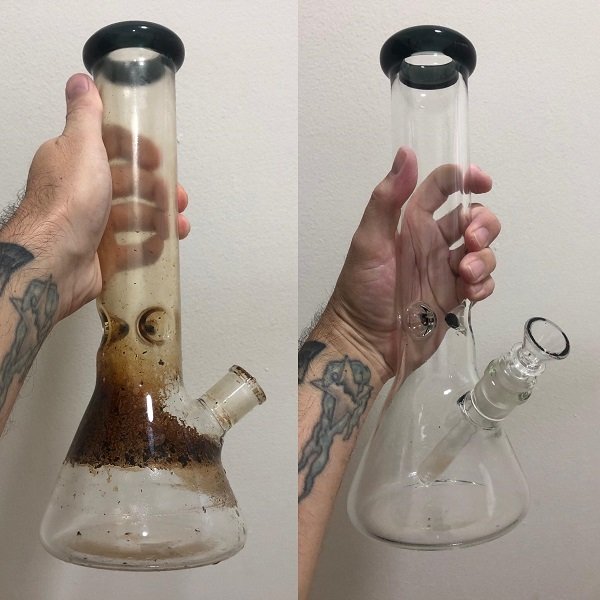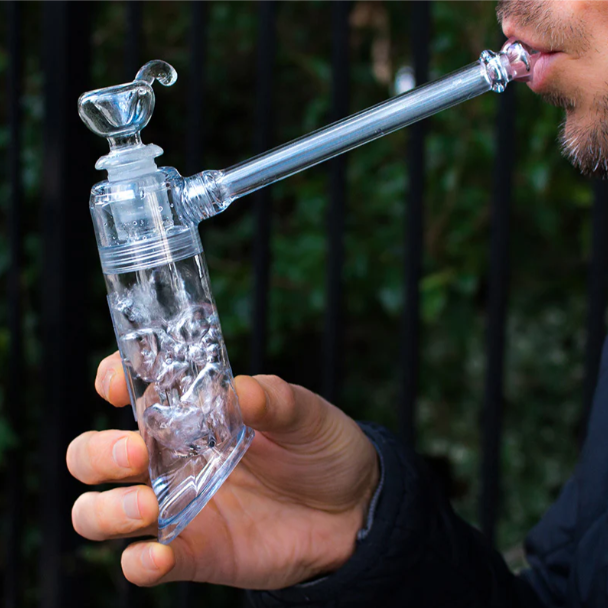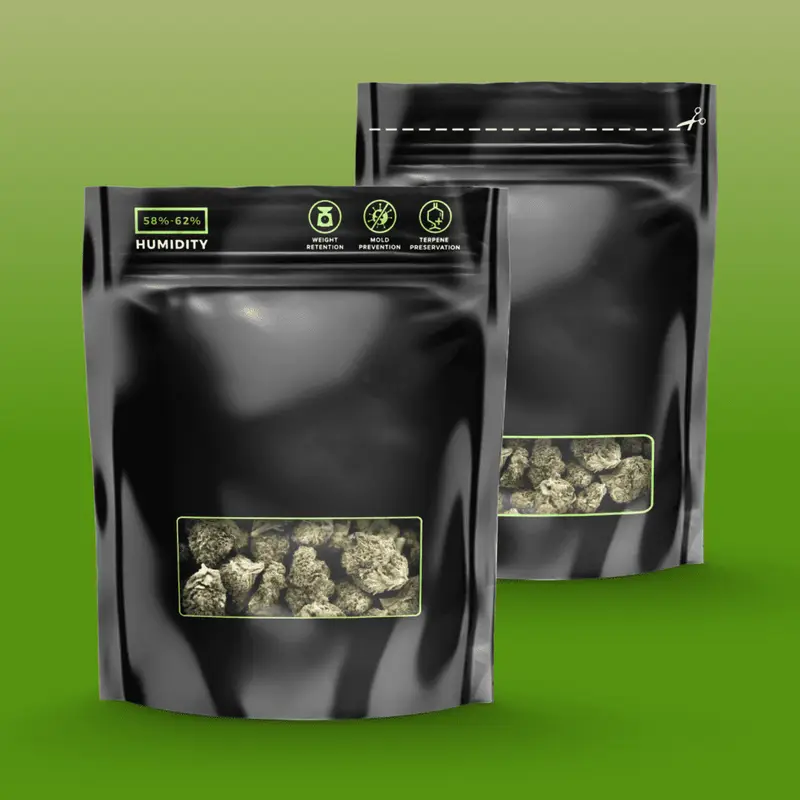I often get asked about the safety of using a bong every single day. Some folks treat it like a regular routine, while others worry about possible health issues. Let’s talk about it in a friendly, down-to-earth way.
If you’re wondering whether it’s safe to use a bong daily for smoking weed, the answer isn’t straightforward. Everyday bong use can feel smooth at first, thanks to water filtration. However, inhaling burnt plant matter regularly still carries risks, including potential lung irritation. Moderation, good hygiene, and listening to your body play big roles in minimizing harm.
Let’s jump in and break down the real scoop on daily bong habits.
What Happens to Your Body When You Use a Bong Every Day?
Using a bong every day can lead to subtle changes you might not notice right away. I’ve seen people feel more relaxed or focused, while some experience fatigue or cough. It’s often about the balance between how soothing you find the ritual and what it does internally over time.
Daily bong use can affect your respiratory system by exposing lungs to hot smoke repeatedly. Though the water cools and filters the smoke, it can’t remove every harmful particle. Over time, you might develop a persistent cough or increased mucus production. Staying hydrated, maintaining a clean bong, and monitoring your breathing patterns may help lessen unwanted effects.

When it comes to daily bong use, I always look at both short- and long-term possibilities. Some people swear by the water filtration, claiming it feels gentler on the throat than smoking a joint or using a dry pipe. But here’s the catch: a bong doesn’t magically eliminate all toxins. The heat from combustion still produces tar, and even if you don’t notice immediate irritation, your lungs might feel it over the long haul.
Potential Respiratory Irritation
Regular inhalation of any type of smoke can irritate your airways. The water chamber can trap some impurities, but not all. Over time, this could contribute to wheezing, coughing, or a scratchy throat. If you start noticing more frequent coughing bouts, it’s often a sign to ease up or try other methods, like vaporizers designed for cannabis.
Changes in Energy Levels
Sometimes people say they feel increased relaxation when they smoke daily. Relaxation is lovely, but heavy use can spill over into feeling tired or even unmotivated. That low-energy vibe might affect your productivity, your exercise routine, or your day-to-day social life.
Water Hygiene Matters
One detail that often gets overlooked is how essential it is to keep your bong water clean. Dirty bong water can host bacteria and fungi that could lead to infections. A fresh water change, ideally each session, helps reduce the risk of exposing your lungs to nasty microbes.
You can think of it like washing a coffee cup. You wouldn’t want day-old residue in your morning brew, and the same logic applies to your bong. Clean gear equals a more pleasant experience and a safer long-term habit.
Are There Any Health Risks of Daily Bong Smoking?
It’s natural to wonder if daily bong smoking carries real health concerns. The short answer is that any smoke inhalation has potential downsides, and bongs aren’t entirely exempt.
Yes, there are possible health risks if you use a bong every day. Even with water filtration, you’re still inhaling smoke that contains tar and other chemicals. This can cause respiratory issues over time, such as wheezing, coughing, or bronchial irritation. Paying attention to these signals is key, and taking breaks can help protect your lungs.

[Cannabis] (https://en.wikipedia.org/wiki/Cannabis_(drug))) can be a helpful plant for many people, whether for relaxation or pain relief. But like many good things, overdoing it might bring unwanted outcomes. Let’s explore the potential pitfalls more thoroughly.
Respiratory Concerns
Whether you’re lighting up from a joint, pipe, or bong, burned plant material produces harmful byproducts. Chronic inhalation might contribute to respiratory issues like bronchitis. The water filtration can reduce dryness or harshness, but it won’t eliminate everything. Over months or years, you might notice more frequent coughing or an increased sensitivity to airborne irritants.
Psychological Effects
Some individuals rely on daily bong hits to manage stress or simply to unwind. While cannabis use can be calming, it’s not always a guaranteed stress buster. High-THC strains, for instance, can sometimes fuel anxiety or paranoia. If you feel uneasy more often, it may be worth cutting back or switching to lower-THC options.
Social & Lifestyle Factors
Smoking daily can become part of a routine that might interfere with personal, social, or professional responsibilities. For instance, imagine feeling too sluggish to hit the gym or too unfocused during a work meeting. Those subtle impacts can add up, shaping your overall well-being.
To be fair, not everyone who smokes daily faces these issues. Body chemistry, the type of cannabis, and even the environment can shape the experience. But being aware of risks helps you make a choice that aligns with your goals and your health.
Does Using a Bong Make Smoking Weed Safer?
It’s tempting to think bongs are a magical solution that removes all bad stuff. I understand the allure: water filtration sounds healthier, and the hits can feel smoother.
A bong can offer a smoother inhale compared to a dry pipe, but it doesn’t fully eliminate risks. Harmful substances still pass through, including tar, carbon monoxide, and other chemical byproducts. While bongs can reduce throat irritation, you’re still inhaling combusted plant matter, which poses health considerations.

When I was first introduced to bongs, I thought the water did most of the heavy lifting in filtering out everything harmful. Over time, I learned that water is only a partial filter—like a mesh that stops large debris but allows fine particles to sneak through. Let’s explore the nitty-gritty.
The Filtration Myth
Many people assume water filtration removes all toxins. Realistically, it’s more like removing some dust from the air but not the invisible pollutants. Smoke still contains substances that can irritate your lungs. Don’t forget, the burnt material forms tar, and even if water catches some, it can’t catch it all.
Comparison to Other Methods
- Joints: Convenient but unfiltered. You inhale directly.
- Vaporizers: Heat cannabis at a lower temperature, potentially releasing fewer harmful byproducts.
- Bongs: Cool down the smoke and filter large particles.
Although a bong is arguably “gentler” than a joint, it doesn’t guarantee a safer ride altogether. If you’re smoking daily, that repeated exposure accumulates. You might see less immediate irritation, but your lungs are still experiencing repeated stress.
Taking an Informed Approach
If you love your bong hits, that’s okay—just stay mindful. Clean it often, avoid extremely hot water (which can crack the glass), and remember to change the water regularly. These steps don’t make it 100% safe, but they help reduce the impact.
How Does Daily Bong Use Affect Your Tolerance and Dependence?
It’s common to wonder if everyday bong use might boost your tolerance levels. After all, when you do something every day, the body can adapt.
Daily bong use can lead to increased tolerance, meaning you might need more cannabis to feel the same effects. Over time, this cycle may foster dependence, where skipping a session feels uncomfortable. Giving yourself occasional breaks is one way to keep your tolerance in check and reduce the risk of overreliance.

Let’s look into what tolerance and dependence (learn more) mean in practical terms.
Tolerance and the Body’s Adaptation
When you smoke cannabis regularly, your body gets used to cannabinoids like THC. Over time, you might find that your usual dose doesn’t give the same buzz or relief as before. This is called tolerance. Some people solve this by upping their consumption, but that can accelerate dependence.
Dependence Traps
Dependence isn’t just about psychological cravings—your body’s chemistry can become accustomed to regular cannabis exposure. Without it, you might feel restless, moody, or struggle to sleep. This doesn’t happen to everyone, but if you notice it creeping in, it’s good to reassess how often and why you’re smoking.
Tips to Manage Tolerance
- Take Tolerance Breaks: Stepping away from the bong for a few days or weeks can reset your sensitivity.
- Alternate Strains: Switching between strains with different cannabinoid profiles may help avoid rapidly building tolerance to a single type.
- Mindful Usage: Focus on the experience. If you’re hitting the bong out of habit, consider exploring other ways to relax.
It’s not about demonizing daily bong use, but rather acknowledging how your body works. The aim is to find that sweet spot where you’re enjoying cannabis without letting it dominate your day.
Tips to Minimize Harm If You Use a Bong Regularly
Even if you’ve decided that daily or near-daily use is part of your lifestyle, there are ways to soften the potential blow on your health. I think it’s vital to approach it like any other habit: a mix of knowledge, moderation, and a dash of practicality.
Try cleaning your bong often, change the water daily, and consider lower-THC strains to reduce potential side effects. Maintain awareness of your lung health—coughing or tightness in your chest might signal it’s time to adjust. And don’t forget about hydration, because daily smoking can dehydrate you more than you think.

Let’s expand on some useful strategies.
Cleanliness and Maintenance
I always emphasize that a dirty bong is the quickest way to turn a pleasant habit into an unhealthy one. Stagnant water can lead to bacterial growth. Residue on the glass can expose you to more tar and impurities. Cleaning your bong regularly with isopropyl alcohol and salt helps keep things fresh. It’s like washing your dishes—you just do it.
Strain and Potency Management
- Choose Strains Wisely: If you’re using a bong daily, strains with lower THC or balanced CBD/THC ratios might lessen the risk of feeling overwhelmed or anxious.
- Try a Mix: Rotating strains can help delay tolerance. It also keeps the experience interesting.
Mindful Usage
- Set Intentions: Knowing why you’re smoking can help you recognize if it’s purely habit or if it genuinely benefits your day.
- Stay Active: Regular exercise and deep breathing exercises can support lung function, which is important if you’re inhaling smoke daily.
Consider Your Source
Since I run a wholesale business for glass water pipes, I’ve noticed that investing in quality glass can actually reduce hidden hazards like cracks or leaks. Good-quality glass is less likely to shatter, especially if you’re cleaning it often or changing water temperatures. That said, always inspect your equipment for wear and tear.
Track Your Usage
A simple log of how often you smoke and how you feel afterward can reveal patterns. Sometimes we don’t realize how frequently we’re lighting up until we see it in writing.
All of these small steps add up, offering a safer, more enjoyable routine if daily bong use is your choice.
When Should You Consider Taking a Break From Daily Bong Use?
Knowing when to take a step back can be tricky. After all, you might feel it’s part of your daily rhythm, like drinking a cup of coffee or tea.
You might need a break if you notice constant fatigue, mood changes, or increased anxiety when you don’t smoke. If your tolerance spikes, and you’re smoking more just to feel normal, that’s another clear sign. Short pauses from daily bong use can reset your body and help you maintain balance.
Let’s dig into the signs that might suggest it’s time to set the bong aside for a bit.
Signs You May Need a Break
- Persistent Cough: If you’re coughing more than usual, especially in the mornings, your lungs may need a rest.
- Heightened Anxiety: Cannabis can relax some people, but for others, daily use might backfire and trigger anxious or paranoid feelings.
- Tolerance Gone Wild: You’re going through your stash faster than usual, and the effects feel weaker. That’s a textbook sign of tolerance buildup.
- Motivation Slump: It’s normal to feel chilled out, but if you’re consistently unmotivated to do daily tasks, that’s a red flag.
How to Take a Break Successfully
- Gradual Reduction: Some folks quit cold turkey, but tapering down can be gentler on your system.
- Supportive Activities: Engage in hobbies or exercise to fill the time and reduce cravings.
- Stay Hydrated: Water helps flush your system and keeps you feeling good.
Benefits of Pausing
Pausing can help your tolerance levels reset, making your next session more enjoyable. You might also rediscover other ways to unwind—like reading, cooking, or chatting with friends. Breaks aren’t a punishment; they’re a tune-up for your body and mind.
Conclusion
Daily bong use can be part of a comfortable ritual, yet it comes with real considerations around lung health, tolerance, and overall well-being. Staying mindful, prioritizing clean equipment, and taking occasional breaks can make all the difference. If you ever have concerns, it’s wise to step back, reassess, and keep your health front and center.






